Contact Us
To provide feedback on the Community Policing Dispatch, e-mail the editorial board at CPDispatch@usdoj.gov.
To obtain details on COPS Office programs, publications, and resources, contact the COPS Office Response Center at 800-421-6770 or AskCopsRC@usdoj.gov

U.S. Department of Justice
Office of Community Oriented Policing Services
Washington, DC 20530
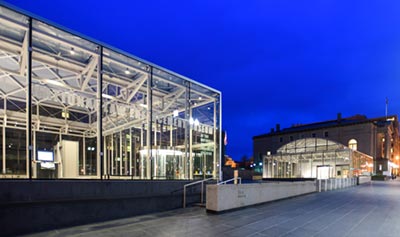 As any police officer knows, there’s a lot more to American law enforcement than walking a beat and catching bad guys. But even the most senior officer may be surprised to learn the amazing scope and fascinating history of the varied agencies that serve and protect our country at the local, state, tribal and federal level.
As any police officer knows, there’s a lot more to American law enforcement than walking a beat and catching bad guys. But even the most senior officer may be surprised to learn the amazing scope and fascinating history of the varied agencies that serve and protect our country at the local, state, tribal and federal level.
Visitors to a unique new museum in Washington, D.C. can not only learn this history, but see, hear, and experience it. With over 20,000 artifacts and eight major exhibits, most of them high-tech and interactive, the National Law Enforcement Museum covers the many fields and roles of law enforcement—patrol officers, forensic specialists, park rangers, FBI investigators, and others—with stories and activities that offer visitors a chance to “walk in their shoes.”
Discover the Proud History of American Law Enforcement
Sponsored by the National Law Enforcement Officers Memorial Fund and located next to the National Law Enforcement Officers Memorial Wall in Washington DC’s Judiciary Square, this private nonprofit museum was created to help build relationships of trust and understanding between law enforcement and the public through education, immersive experiences, and insightful programs. It offers an opportunity for individuals of all ages and backgrounds to understand how American law enforcement evolved, what its current practices are, and what the future may hold.
Send Officers Out on Call, Investigate a Suspect, and Set Up a Legal Wiretap
Designed to inform and engage all levels of interest, the museum’s interactive exhibits can be fun and educational even for those who work in law enforcement. Here are some of the things a visitor can do:
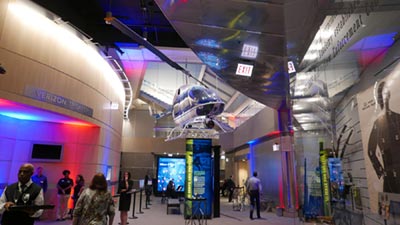 Become an emergency dispatcher in the 911 Emergency Ops exhibit—answer calls, assess the situation, dispatch officers, and hear recordings of real 911 calls.
Become an emergency dispatcher in the 911 Emergency Ops exhibit—answer calls, assess the situation, dispatch officers, and hear recordings of real 911 calls.- Take the case and analyze the forensic evidence to solve a variety of real-life crimes.
- Participate in an immersive training simulator and learn how officers make split-second life or death decisions on the job.
- Ride along with officers they interact with Dispatch, respond to drug busts, answer calls for back up, evaluate situations, and make arrests.
- Find the FBI’s secret surveillance position and learn how they set up a wiretap when a special agent infiltrated the mafia in a real sting operation.
- Step into a 6x8 steel cell from the former Lorton Correctional Complex in Lorton, Virginia and see the contraband corrections officers often collect.
See Who Shot Billy the Kid and Get Close to Osama bin Laden’s Cap
Throughout the museum are items of all kinds that illustrate the rich history of American law enforcement. Visitors will find photos, vintage uniforms, newspaper clippings, and a wide variety of other artifacts like these:
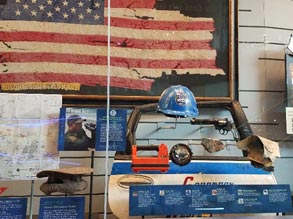 A 1929 Thompson submachine gun—better known as a Tommy Gun—like those used by Bonnie and Clyde, with a photo of the officers who killed them with the same kind of weapon.
A 1929 Thompson submachine gun—better known as a Tommy Gun—like those used by Bonnie and Clyde, with a photo of the officers who killed them with the same kind of weapon. - The helicopter used by Park Police to save passengers from the icy waters of the Potomac River after their Air Florida flight crashed in 1982
- A video of the heroic efforts to rescue victims from the 9/11 attack, a remnant of the Twin Towers, and a flag that flew nearby
- Osama bin Laden’s pakol, or cap, grabbed by a Navy Seal who helped capture him, and recovered by the Naval Criminal Investigative Service
Real Life Stories and Honors for Fallen Officers
Two special exhibits bring the personal experiences—and sacrifices—of officers to life. In Officers’ Stories, visitors can hear more than 30 individuals from various services talk about all aspects of their jobs—the cases, events, challenges, and rewards.
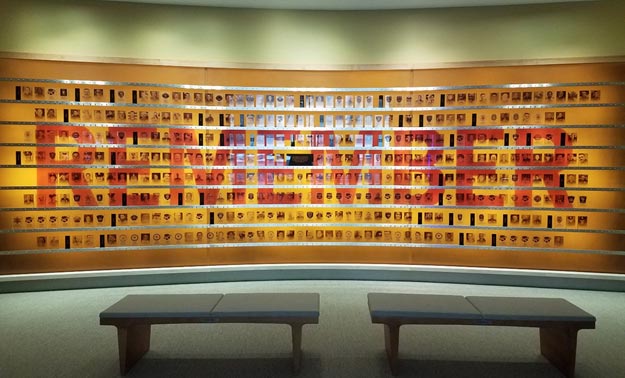
In the Hall of Remembrance, an interactive wall, which is continuously updated, displays the names and pictures of 371 officers who have lost their lives in in the line of duty during the current year, as well as some whom have recently been discovered—going as far back as Benjamin Branch, the sheriff of Chesterfield County, Virginia, who died in 1785. Visitors can also look up any officer at one of the hall’s computers and add personal notes to the short biography there.
A Forum for Dialogue and Understanding
Intended as a resource for learning, a platform for greater understanding, and a springboard for new ideas, the museum accomplishes its mission in a variety of ways.
In addition to a meeting room, which groups reserve for forums on important concerns such as race relations and the opioid crisis, the museum invites distinguished leaders in American law enforcement to discuss their careers and insights for the future. Among them was Charles Ramsey, former commissioner of the Philadelphia (Pennsylvania) Police Department and co-chair of the President’s Task Force on 21st Century Policing.
But any day of the week, adult visitors can engage in discussion on tours with the museum docents, many of whom are current or retired law enforcement personnel. The museum also offers special programs for children.
An Eye-Opener for Adults and Fun for Kids
According to volunteers who work at the museum, the visitor reaction they most often see is amazement. “Many people come away realizing that they don’t know nearly as much as they thought they did about law enforcement,” said a docent working at the training simulator. “I hear them coming out of the simulator, which has a decision making module that discusses use of force and verbal de-escalation skills, saying “’I had no idea how much this job entails’.”
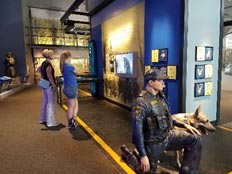 Said Michael Kruso, an officer from Jackson, Michigan, visiting the museum with his son, “It’s an incredible experience. I was especially moved by the artifacts from 9/11. I was in fifth grade at the time, and it was surreal for me to see pieces of one of the planes and buildings.“
Said Michael Kruso, an officer from Jackson, Michigan, visiting the museum with his son, “It’s an incredible experience. I was especially moved by the artifacts from 9/11. I was in fifth grade at the time, and it was surreal for me to see pieces of one of the planes and buildings.“
Young officer-wannabes get a big charge out of the museum too. Another docent tells the story of a family that brought their six-year-old dressed in a little police uniform. ”He was so excited about all the exhibits. But the police cruiser was his favorite, and once he climbed in, his parents had a very hard time getting him out.”
Even the people who work at the museum, including current and retired officers as well as survivors and college students studying criminal justice, say that they have learned a lot. Museum Curator Chelsea Hansen says “I am a curator, and even I am amazed at what I learn every day—there is so much here and more coming.”
Faye Elkins
Sr. Technical Writer
Subscribe to Email Updates
To sign up for monthly updates or to access your subscriber preferences, please enter your email address in the Subscribe box.






